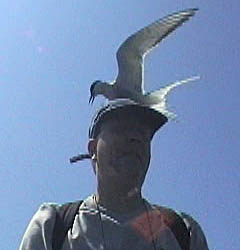A new perch was in use, and more user friendly for snaps. I won't see the family again now, but hopefully all will go well for them. Judging by the vuvuzela hum of insects in the background there should be plenty of food. (I think I nearly mentioned the world cup there - sorry!).




 Nearer home I had to look twice at this bird before realising it was a juvenile bullfinch. A first for me.
Nearer home I had to look twice at this bird before realising it was a juvenile bullfinch. A first for me.
One surprise near the flycatchers was what I'm believe is a golden-ringed dragonfly. In my minds eye I had never pictured this as a Forest of Dean species - always thought more of upland areas.
and in the garden a mullein moth caterpillar had decided to leave the mulleins (verbascum) alone, and was tucking into this figwort (balm leaved?) - not a mullein, but same family - Scrophulariaceae, which sounds more like a disease than anything.

A local woodland hosted centaury

and, I think, hairy St John's wort (happy to be corrected on that one, but it seems the best fit - just not over hairy).

Southern Marsh orchid ....

and pyramidal orchid at Newport wetlands - no sign of any bee orchids. Don't know if I'd missed them or they just hadn't shown up this year.

Also at the wetlands self-heal.

And last but not least back to that local meadow (thanks Paul) for a lovely example of a common spotted orchid.














 Meanwhile on returning home I found the forest had come to our garden in the shape of a male and juvenile great spotted woodpecker. Despite it's size the male was still carefully breaking up food for the youngster. We've since heard the female was doing the same in a neighbours garden. Not great quality pic's - handheld in lowish light. I knew that 'post' would provide a photo-opportunity of some kind in the end!
Meanwhile on returning home I found the forest had come to our garden in the shape of a male and juvenile great spotted woodpecker. Despite it's size the male was still carefully breaking up food for the youngster. We've since heard the female was doing the same in a neighbours garden. Not great quality pic's - handheld in lowish light. I knew that 'post' would provide a photo-opportunity of some kind in the end!

















































